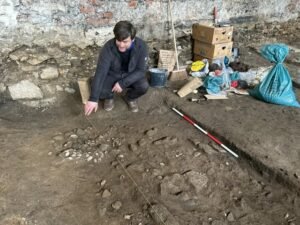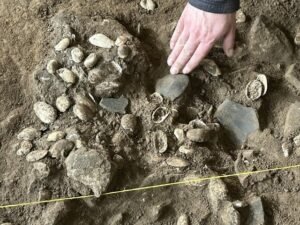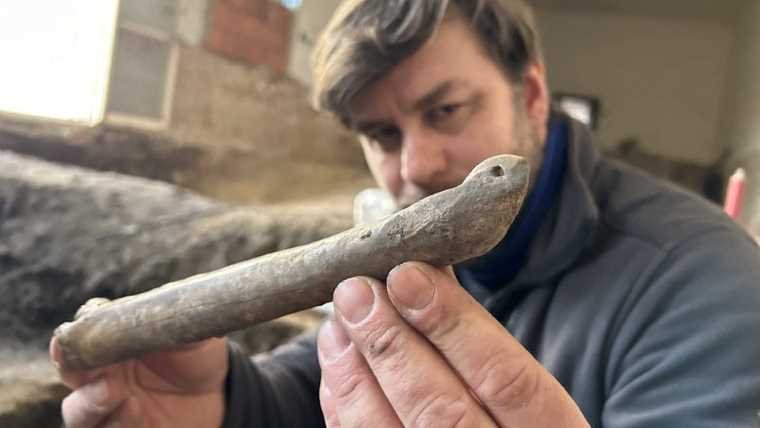Archaeologists working in the Monrovia region of the Czech Republic say they have unearthed what appears to be a 1,000-year-old ice skate. Made of animal bone, the researchers behind the unusual find say it was bonded to the wearer’s feet with leather straps or connected to a wooden “sledge” used for transporting items across the ice.
Researchers from the Comenius Museum in Přerov, a town situated on the River Bečva, discovered the 1,000-year-old ice skate while performing what they referred to as a “rescue” dig in the basement of a house in the region. According to the dig’s leader, Archaeologist Zdeněk Schenk, his team stumbled upon the ancient skate when digging through layers of silt beneath the house, and they saw something unusual staring back at them.


“The object has a specific shape,” explained Schenk in an interview with Radio Prague International. “On one side, it is curved into a tip which has a hole drilled in it, and there is another hole at the back.” The researcher also said it was immediately apparent that the 1,000-year-old ice skate was made of animal bone, making it strong and resistant to rust.
As noted, Schenk also pointed out that his team believes that the skate served a dual purpose. In a more familiar use, it could serve as a means of rapid transportation across the ice while sparing the wearer’s feet from the cold. However, its study design and historical context suggest it was also likely attached with other similar skates to the base of a transport sledge, allowing the user to pull large amounts of weight across long distances.
“[The holes] were used to thread a strap through, which was used to attach the skate to a shoe or to a wooden sledge,” Schenk told the interviewer.
The researchers note that the bone skate doesn’t have enough active biological material to be dated directly. However, its location among fragments of pottery that were clearly dated to the 10th or 11th century revealed its likely age. This timeline is notable, says Schenk, due to its historical significance.
“It dates back to the time when there was a very important fortress in the area of the Upper Square,” the archaeologist explained. “It served as a stronghold for Polish King Boleslav the Brave, who occupied Moravia at the time and had his soldiers stationed there.”


Although the researchers admit that the idea of a 1,000-year-old ice skate may conjure images of Olympic athletes completing complex maneuvers at high speeds, the people of that time more likely used the skate in a more practical, slow-footed manner.
“Rather than skating, they would shuffle along the frozen surface with the help of a stick or two,” Schenk explained.
While an unusual find, the researchers say there are actually other examples of similarly aged ice skates found in various European locations. Still, some of them may have a more Nordic origin.
“We know of other similar pieces found in Central Europe and especially in north-western Europe, in Scandinavia” Schenk said. “They mostly come from the same time frame as the one from Přerov, and they are often found in 10th-century Viking settlements.”
At this point, the researchers are still examining the 1,000-year-old ice skate to learn as much as they can about its use and origin. However, they say that when that process is done, it will be put on display at a city’s castle as part of an exhibition “dedicated to the history of the region.”
Christopher Plain is a Science Fiction and Fantasy novelist and Head Science Writer at The Debrief. Follow and connect with him on X, learn about his books at plainfiction.com, or email him directly at christopher@thedebrief.org.

